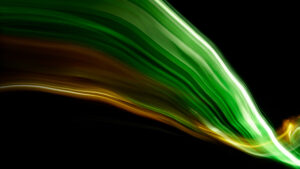In the realm of photography, mastering exposure is paramount to capturing images that truly shine. Whether you’re photographing a stunning landscape, a portrait of a loved one, or a bustling cityscape, understanding how to control light and achieve perfect exposure can make all the difference in the quality of your photos. In this comprehensive guide, we’ll explore essential techniques for mastering exposure and lighting, illuminating the path to achieving stunning images that captivate and inspire.
Understanding Exposure Basics
Before diving into advanced exposure techniques, it’s crucial to grasp the fundamentals of exposure. Exposure refers to the amount of light that reaches the camera’s sensor, determined by three primary settings: aperture, shutter speed, and ISO. Aperture controls the size of the lens opening, shutter speed regulates the duration of light exposure, and ISO measures the sensor’s sensitivity to light. Mastering the interplay between these three settings is key to achieving optimal exposure in any lighting conditions.
Balancing Aperture, Shutter Speed, and ISO
The exposure triangle—comprising aperture, shutter speed, and ISO—forms the foundation of exposure control in photography. By adjusting these settings in tandem, photographers can achieve the desired balance between light, depth of field, and motion blur. Aperture priority mode allows photographers to prioritize depth of field by adjusting the lens opening, while shutter speed priority mode prioritizes motion capture by controlling the duration of exposure. In manual mode, photographers have full control over all three settings, enabling precise exposure adjustments for optimal results.
Harnessing Natural Light
Natural light is a photographer’s most versatile and readily available light source, offering a range of creative possibilities depending on the time of day and weather conditions. The golden hour—shortly after sunrise and before sunset—provides soft, warm light ideal for capturing landscapes, portraits, and architectural details. The blue hour—just before sunrise and after sunset—offers a magical, ethereal quality perfect for capturing cityscapes and night scenes. By understanding the nuances of natural light, photographers can harness its beauty to enhance their images and create stunning visual narratives.
Mastering Artificial Lighting Techniques
In addition to natural light, artificial lighting plays a vital role in photography, particularly in controlled environments such as studios and indoor settings. Studio photography relies on a variety of artificial lighting sources, including strobes, softboxes, and umbrellas, to illuminate subjects and create desired lighting effects. Off-camera flash allows photographers to control the direction and intensity of light, while continuous lighting provides a consistent light source for video and long-exposure photography. By mastering artificial lighting techniques, photographers can unleash their creativity and achieve professional-quality results in any setting.
Understanding Dynamic Range and Exposure Compensation
Dynamic range refers to the range of tones—from the darkest shadows to the brightest highlights—that a camera can capture in a single image. In high-contrast scenes, such as landscapes with bright skies and deep shadows, achieving perfect exposure can be challenging. Exposure compensation allows photographers to adjust the exposure settings to compensate for challenging lighting conditions, ensuring that both highlights and shadows retain detail and texture. High dynamic range (HDR) photography takes this concept a step further, blending multiple exposures to create a single image with enhanced dynamic range and tonal detail.
Fine-Tuning White Balance for Accurate Color Representation
White balance refers to the color temperature of light, which can vary depending on the light source and environmental conditions. Different light sources, such as sunlight, fluorescent bulbs, and incandescent lamps, emit light with varying color temperatures, resulting in shifts in color cast and hue. By adjusting the white balance settings in-camera or in post-processing, photographers can ensure accurate color representation and maintain the integrity of their images. Custom white balance allows photographers to calibrate the camera’s color response to match specific lighting conditions, resulting in more accurate and true-to-life colors.
Conclusion: Illuminating the Path to Perfect Exposure
In conclusion, achieving perfect exposure is a fundamental skill that lies at the heart of successful photography. By mastering exposure basics, balancing aperture, shutter speed, and ISO, harnessing natural and artificial lighting techniques, understanding dynamic range and exposure compensation, and fine-tuning white balance, photographers can unlock the full potential of their creativity and capture images that truly shine. Whether you’re a beginner exploring the intricacies of exposure or a seasoned pro refining your craft, the techniques outlined in this guide will illuminate the path to achieving perfect exposure and capturing stunning images that leave a lasting impression.



